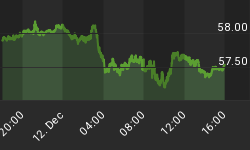My inflation indicator is shown in figure 1 below a weekly chart of the S&P500. I have shown this indicator in past commentaries. The indicator is constructed by looking at the strength and quality of the price trends in gold, crude oil and yields on the 10 year Treasury bond. The current value is in the danger zone indicating high levels of inflation, and the vertical lines on the chart mark recent times this indicator was in the danger, high inflation zone. As you can see, the indicator has done a fairly decent job at identifying intermediate term trading highs in the S&P500, and with this last week's poor action, inflationary pressures are working against equity prices again.
Figure 1. Inflation Indicator/ weekly
From a historical perspective, this is nothing new. Since 1984, there have been 50 unique instances where the indicator has been in the high inflation or danger zone. If you were so smart to only buy the S&P500 during these periods, such a strategy would yield a negative 307 S&P500 points with 47% of your trades being winners. The equity curve for this strategy is shown in figure 2, and it should be obvious that being in the market when inflation is high (as defined by the indicator) is not a good strategy. Since 1984, there really is no single period where there is an edge to being in stocks when the trends in gold, crude oil, and Treasury yields are strong.
Figure 2. Equity Curve
Or to spin another way: strength in gold and crude oil and higher Treasury yields really does make a difference for equity prices.
The bottom line is this: high inflation, as determined by this indicator, is a significant head wind for higher equity prices.
To learn more about our quantitative and disciplined investment approach please visit www.thetechnicaltake.com and sign up for our free weekly newsletter and downloads.
Guy M. Lerner may be reached at guy@thetechnicaltake.com.
















